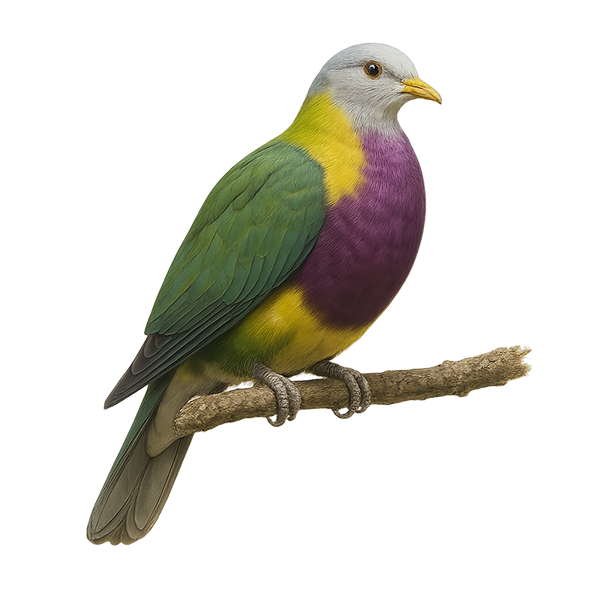Your wildlife photography guide.
Explore the wompoo fruit dove in detail, study its behavior, prepare your shots.
Where to observe and photograph the wompoo fruit dove in the wild
Learn where and when to spot the wompoo fruit dove in the wild, how to identify the species based on distinctive features, and what natural environments it inhabits. The WildlifePhotographer app offers tailored photography tips that reflect the wompoo fruit dove’s behavior, helping you capture better wildlife images. Explore the full species profile for key information including description, habitat, active periods, and approach techniques.
Wompoo Fruit Dove
Scientific name: Ptilinopus magnificus

IUCN Status: Least Concern
Family: COLUMBIDAE
Group: Birds
Sensitivity to human approach: Suspicious
Minimum approach distance: 10 m
Courtship display: September to November
Incubation: 14-16 jours
Hatchings: September to December
Habitat:
Tropical rainforests, mangroves, lowland forests
Activity period :
Primarily active during the day, with peak activity in the morning and late afternoon.
Identification and description:
The Wompoo Fruit Dove is a medium-sized bird with vibrant and varied plumage. Its body is primarily green, with a purple head and chest, and a yellow belly. This fruit-eating pigeon is mainly arboreal, feeding on fruits in the rainforests of Australia and New Guinea. It is often heard before seen, thanks to its distinctive, deep call. Though discreet, it plays a crucial role in seed dispersal, aiding in forest regeneration. Its presence is an indicator of the health of its natural habitat.
Recommended lens:
400 mm – adjust based on distance, desired framing (portrait or habitat), and approach conditions.
Photography tips:
To photograph the Wompoo Fruit Dove, it is advisable to use a telephoto lens of at least 400mm to capture the details of its colorful plumage without disturbing it. Look for it in tropical rainforests, listening for its distinctive call to locate it. Patience is key, as this bird can be discreet. Try photographing early in the morning or late in the afternoon when the light is soft and highlights the vibrant colors of its plumage.
The WildlifePhotographer App is coming soon!
Be the first to explore the best nature spots, track rutting seasons, log your observations, and observe more wildlife.
Already 1 432 wildlife lovers subscribed worldwide

